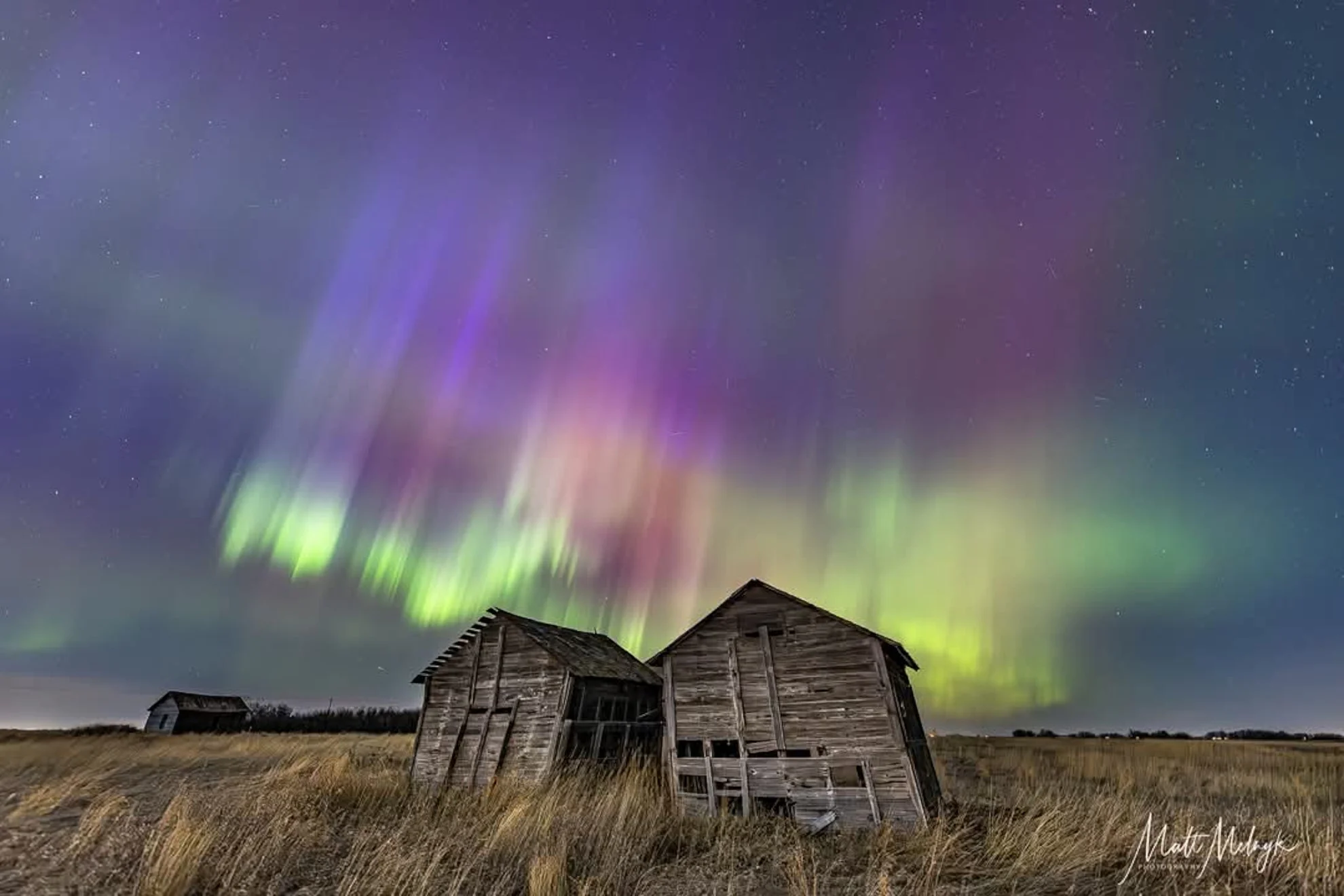
Another round of auroras may light up the sky across Canada Thursday night
After four nights of the Northern Lights, they may be returning for an encore show tonight.
Check your sky forecast and turn your eyes to the north, as the Aurora Borealis may be back for yet another night.
A fast, energetic stream of the solar wind is currently flowing past Earth, originating from a large coronal hole stretched across the southern hemisphere of the Sun.

The view of the Sun from the GOES-19 SUVI camera shows the conditions in the solar atmosphere (the corona). A large coronal hole splits the southern hemisphere, sending a fast stream of the solar wind flowing past Earth through this week. (NOAA)
As we just passed through the September equinox, Earth's magnetic field is still particularly susceptible to forming connections with coronal hole streams. These connections, known as “equinox cracks”, open up fast-tracks for high-energy solar particles to funnel down into the atmosphere.
The result is night after night of bright Northern Lights displays. Plus, it looks like we're in for at least one more round as the flow continues to impact Earth's geomagnetic field.

Satellite imagery captured the intense auroras over Canada on the night of September 30, 2025. (CIRA - NOAA)
As of midday on Thursday, NOAA's Space Weather Prediction Center is forecasting a G1 (minor) geomagnetic storm overnight, timed during the hours between sunset and midnight, EDT, on October 2.
The Canadian Space Weather Forecast Centre outlook has the elevated activity beginning at the same time, but — as with their October 1 forecast — they project that the activity will persist until sunrise.

READ MORE: What is space weather, what are geomagnetic storms, and why are the auroras so active lately?
A G1 geomagnetic storm tends to limit the aurora extent to northern regions of eastern Canada and central regions of the Prairies.
However, as we've seen over the past few nights, there may be several intense 'substorm' periods, and the actual conditions may end up exceeding expectations.

Geomagnetic activity from Sep 30 - Oct 2, 2025, showing the persistent storm levels recorded due to the solar wind. Even though the SWPC forecast called for G2 storm levels overnight on the 1st, activity actually reached G3 levels, between 11 p.m. to 2 a.m. EDT. (NOAA SWPC)
RELATED: Geomagnetic storms - When should we look up and when should we worry?
Geomagnetic storms are periods of elevated activity, including auroras, that last for three or more hours.
In contrast, a substorm is any intense burst of auroras that occurs over a shorter period of time, from a few seconds up to a couple of hours.

INCREASE YOUR SPACE WEATHER IQ: How do the Northern Lights shine? Here's the science behind auroras
A substorm may not last long enough to be officially recorded as a storm. Even so, it could briefly appear to be the equivalent of G1, G2, or even G3 storm strength, with the corresponding brightness and extent of the Northern Lights you'd expect at those levels of activity.
Given how chaotic geomagnetic activity can be at times, any storm that gets recorded could even be the product of several intense substorms occurring one after the other throughout that three-hour period.
So, keep an eye on the skies to the north (or even overhead) tonight. You may have a chance to spot an amazing display of the Northern Lights.
(Thumbnail image courtesy Matt Melnyk, who captured this colourful display of the northern lights from near Calgary on March 22, 2025.)
